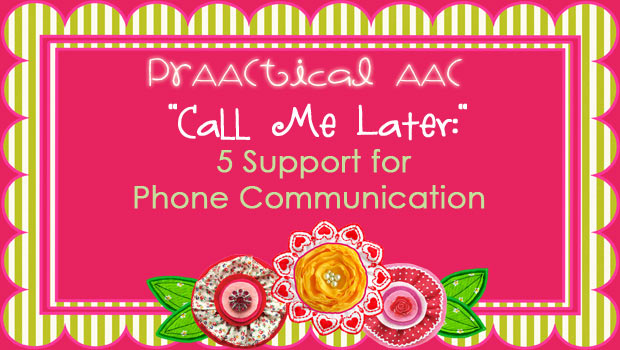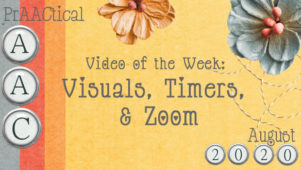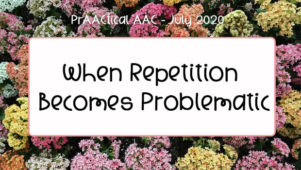"Call Me Later:" 5 Supports for Phone Communication by People Who Use AAC

While I am not one of those folks who has a phone glued to her ear, I sure wouldn’t want to live without the ability to make a phone call. Here are some sites with information of interest to people with AAC needs.
/phone_visual_SET_BC.png) 1. Photo Phone Dialing: While many high tech SGDs can do phone dialing, sometimes the best solution is the simplest one. For some people, using a phone that has prestored numbers stored under photo buttons, provides just enough support to make the call. Once the call is placed, however, out comes the SGD so the conversation can proceed.
1. Photo Phone Dialing: While many high tech SGDs can do phone dialing, sometimes the best solution is the simplest one. For some people, using a phone that has prestored numbers stored under photo buttons, provides just enough support to make the call. Once the call is placed, however, out comes the SGD so the conversation can proceed.
–
2. Phone Skills: We’re not born knowing how to use the phone and some of our AAC friends have needed direct instruction and lots of practice phone skills. Making visual supports, like this one from SET BC, can help. Another neat tool is the Tele-Trainer, which is a peripheral device allowing you to connect two phones for telephone practice. You can set it so that the learner hears a dial tone and has to dial a specific number for the phone to “ring”. The partner is then able to talk to the learner from the second phone. If the learner dials incorrectly, they get a “busy signal” and have to try again.
–
3. Using Natural Speech: Some people with speech impairments prefer to use their natural speech for making phone calls, at least part of the time. In the US, our national relay system has trained call assistants to interpret the person’s impaired speech and relay that to the other party. Here is some information on how to use the free 24/7 Speech-to-Speech Relay Systems (STS) and links to the numbers in all US states
–
4. Research Study on the use of phones, relay services, and social media by people who use AAC. As we know, use of the computer for phone calls is gaining popularity. Mac users will find a useful article on using Voice Over Internet Protocol (VoIP) here.
–
5. There’s an App for That – Unus Tactus: Check out this prAACtical phone app developed by an SLP graduate student Ashley Alliano for people with cognitive difficulties.
–
–
Filed under: PrAACtical Thinking
Tagged With: implementation ideas, phone, resources, visual supports
This post was written by Carole Zangari
/teletrainer_001.png)




